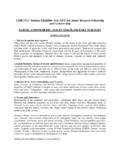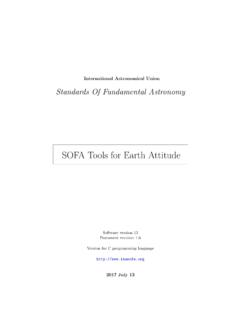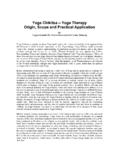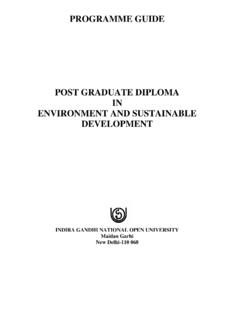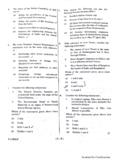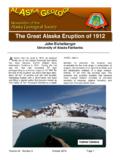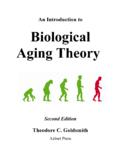Transcription of SECONDARY BIOLOGY - ebook.gov.bd
1 Prescribed by the national Curriculum and Textbook Board for Class IX-X from the academic year of 1996. SECONDARY BIOLOGY . Class IX-X. Written by Dr. Iqubal Aziz Muttaqui Nasim Banu Dr. Md. Abul Hasan Gul Anar Ahmed Translated by Professor Md. Obaidur Rahman Sikder Raihana Begum national Curriculum And Textbook Board, Dhaka Published by national Curriculum and Textbook Board 67-70, Motijheel Commercial Area, Dhaka [All rights reserved by the Publisher]. First Print : 1998. Second Edition: 2007. Reprint April : 2009. Reprint October : Computer Compose Perform Color Graphics (Pvt) Ltd. Illustration Arif Reza Khan Abu Hasmi Md. Faisal Design NCTB, Dhaka For free distribution from academic year 2012 by the Government of Bangladesh. Printed by : PREFACE. Education is the key to development.
2 A progressively improved education system largely determines the pace and the quality of national development. To reflect the hopes and aspirations of the people and the socio-economic and cultural reality in the context of the post independent Bangladesh, new textbooks were introduced in the beginning of the 1980s following the recommendations of the national Curriculum and Textbook Committee. In 1994, in accordance with the need for change and development, the textbooks of lower SECONDARY , SECONDARY and higher SECONDARY were revised and modified. The textbooks from classes VI to IX were written in 1995. in 2000, almost all the textbooks were rationally evaluated and necessary revision were made. In 2008, the Ministry of Education formed a Task Force for Education. According to the advice and guidance of the Task Force, the cover, spelling and information in the textbooks were updated and corrected.
3 To make assessment more meaningful and in accordance with the need of the curriculum, Creative Questions and Multiple Choice Questions are given at the end of each chapter. It is hoped that this will reduce the dependency of students on rote memorisation. The students will be able to apply the knowledge they have gained to judge, analyses and evaluate real life situation. In the revised curriculum. Botany & Zoology has been included in one book BIOLOGY . The study of BIOLOGY has been Presanted through both theory and practical classes. The practical experiments have been given separately. Students can gain knowledge about BIOLOGY and their interest in science will increase when they complete the experiments with the help of the teachers. I. hope that the textbook of BIOLOGY properly reflects the objectives of the curriculum.
4 This book of BIOLOGY for class IX & X is the English Version of the original textbook entitled 'Maydhamic Gibobiggayan' written in Bangla. We know that curriculum development is a continuous process on which textbooks are written. Any logical and formative suggestions for improvement will be considered with care. On the event of the golden jubilee of the Independence of Bangladesh in 2021, we want to be a part of the ceaseless effort to build a prosperous Bangladesh. In spite of sincere efforts in translation, editing and printing some inadvertent errors and omissions may be found in the book. However, our efforts to make it more refined and impeccable will continue. Any constructive suggestion towards its further improvement will be gratefully considered. I thank those who have assisted us with their intellect and effort in the writing, editing and rational evaluation of this book.
5 We hope that the book will be useful for the students for whom it is written. Prof. Md. Mostafa Kamaluddin Chairman national Curriculum and Textbook Board Dhaka Contents Chapter Topics Page 1 Introduction to BIOLOGY 1. 2 Structure and Nature of living Cell 15. 3 Cell Division 28. 4 Division of Labour in Multicellular Plants: Tissue and 36. Tissue System 5 Animal Tissue, Organ and Organ System 46. 6 Classification of Plants 62. 7 Animal Diversity and Classification 78. 8 Structural Organization and Acquaintance of Animals 95. 9 Physiological Activities in Plants : Nutrition 164. Imbibition, Osmosis, Ascent of Sap And Transpiration 168. Photosynthesis and Respiration 182. Growth and Development of Plants 199. 10 Flower 207. 11 Pollination, Fertilization and dispersal of fruits and 216.
6 Seeds 12 Reproduction of Plants 228. 13 Organism and Environment 232. 14 Pollution and Conservation of Environment 247. 15 Natural Diversities of Bangladesh-Distribution of 260. Plants and Animals 16 Economic BIOLOGY 300. Practical Botany 314. Practical Zoology 334. CHAPTER ONE. INTRODUCTION TO BIOLOGY . Now a days we find contributions of Aristotle, Socrates, Theophrastus and many other scholars of the past age in different fields of knowledge. This is not possible for the scholars of the present time. A question may arise in your mind as to why it is not possible today. The reason is that in ages long past the extent of knowledge was limited. People engaged in achieving knowledge were also small in number. Today the dimension of knowledge has been increased many times. To contribute in more than one field is quite difficult at the present time.
7 For convenience to know and understand things we have divided our world of knowledge in many branches. In this way Science, Literature, Arts, Social Science and many other branches have been created. As a whole, knowledge of human beings is undivided. But it has been divided into various branches for easy learning and understanding. You may have known that the knowledge of science is increasing rapidly. It is becoming possible because of the research of a large number of scientists in different fields of science. Many people think that knowledge of science is becoming double in every eight years. New subjects of science are being created. It is not possible to realize and understand this huge store of knowledge for an individual alone. As a result, scientists are engaged in research in particular subject or topic.
8 At different times many scholars have divided the knowledge of science in various ways. The division and different branches of science are constantly spreading with the increase of knowledge in science. The two main branches of science are Physical science and Biological Science. Physical Science is otherwise called the Science of non-living things. In Physical science characteristics, actions-reactions, multiformaity and many similar other properties of non-living objects are examined and discussed. 2 SECONDARY BIOLOGY Observation, examination and discussion of livings beings are included in BIOLOGY . BIOLOGY is the science of living beings. The term BIOLOGY comes from two Greek words (bios means life and logos means knowledge). Aristotle is regarded as the father of BIOLOGY .
9 We find two types of life in nature. One is plant while the other is animal. Accordingly BIOLOGY has been divided into two branches: Botany and Zoology. Botany deals with theoretical discussion and research about characters and other features of plants, while Zoology is limited in subjects relating to animals. PRINCIPAL BRANCHES OF BIOLOGY . BIOLOGY has been divided into Botany and Zoology on the basis of nature of living beings. Inspite of this, now-a-days extensive research has been done on Microorganism. They influence human life in various ways. So for discussion about them a new branch is made. This is known as Microbiology. Considering the subjects of living bodies on which discussion is made the whole range of BIOLOGY is divided into the following main branches. 1. Morphology: This branch deals with both the external and internal structures of organism.
10 The subject concerning internal . structures is also known as Anatomy. 2. Cytology: Each living organism consists of one or more cells. Structures and functions of cells are treated in this branch of BIOLOGY . 3. Histology: In this branch discussion is made on structure, location and function of different tissues. 4. Physiology: This branch includes all the activities of living things growth respiration, excretion, photosynthesis and other biological activities. 5. Taxonomy: In this branch discussion is made on identification nomenclature, and classification of plants and animals into groups and subgroups. Intorduction to BIOLOGY 3. 6. Genetics: How different characters are inherited from parents to offsprings, and how the processes can be controlled and improved etc. are brought under study and research in this branch.



